With record-breaking participation in Almaty, CAPIF 4 rallied network operators, IXPs, policymakers, and researchers to map Central Asia’s next steps. The message was clear: accelerate IPv6, deepen interconnection and measurement for resilience, and diversify paths to keep traffic closer to home.
The fourth Central Asia Peering and Interconnection Forum (CAPIF 4) successfully concluded in Almaty, Kazakhstan, last week, bringing together a record 328 participants (even more than the 280 we initially reported, which was still record-breaking!) from 22 countries.
Over the course of two days, network operators, ISPs, IXPs, policymakers and other stakeholders from across Central Asia and beyond assembled to discuss IPv6, networks of the future, AI, and even a touch of orbital tech! This time, CAPIF returned to Almaty, where the first forum was held, underlining the city’s role as a regional hub for Internet collaboration.
Day 1: IPv6, strategy, and governance
The morning set the tone: IPv6 as the network of the AI era. The session was organised by the newly established Ministry of Artificial Intelligence and Digital Development of the Republic of Kazakhstan and Kazakhstan’s IPv6 Council.
During the official opening, Olzhas Kabenov (Kazakhstan’s Ministry of AI and Digital Development) outlined a national push: IPv6 leadership in Central Asia, AI-ready data centres, and a forthcoming IPv6 White Paper to guide operators and the public sector alike. Hisham Ibrahim (RIPE NCC) reminded us how the idea of creating CAPIF started, and remembered his first visit to Kazakhstan ten years ago – since then, airports got faster, visas got easier, and interconnection followed suit. The local hosts of the event Shavkat Sabirov (Internet Association of Kazakhstan) and Oleg Yemelyanov (Association of Network Operators of Kazakhstan) underlined the obvious: only this community could gather this many ‘rival’ ASNs into one friendly room.
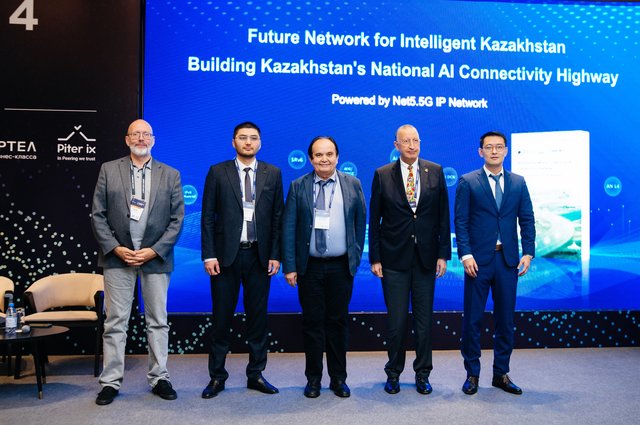
From there, the programme mixed policy ambition with operator reality. Kabenov returned for Next-Gen IPv6, tying the roadmap to Kazakhstan’s President’s recent address to the nation and announcing the launch of the White Paper “IPv6: Unlocking Kazakhstan’s Digital Future”.
The regional connectivity block was where the major operators from the region discussed the current and future interconnection landscape in Central Asia. Operators from Tajikistan shared the plans of covering the rural areas with the new fibre, satellite Internet. They also shared the ambitions of IPv6 rollout and 5G. Aybek Bakanov from Kyrgyz Elcat shared plans to modernise networks and make new nodes and data exchange points. Paulius Vaina’s talk (Connectivity for Central Asia project) brought all this together nicely: connectivity works when policy, information, and proper investment in tools meet the user experience where it actually lives.
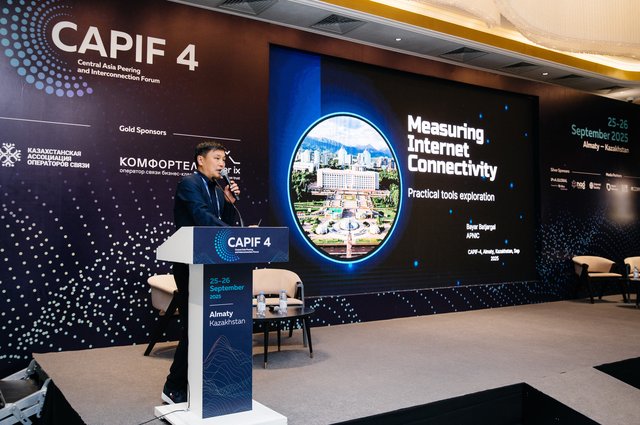
To evaluate the quality of this kind of full-scale work to improve connectivity, getting a view of the Internet through reliable measurements is essential. APNIC’s Bayar Batjargal showed RIPE Atlas signals improving from Mongolia into Central Asia. RIPE NCC’s Alex Semenyaka put CDN performance in the region under the microscope, drawing on RIPE Atlas measurement data. Robbie Mitchell (Internet Society) highlighted Kazakhstan’s strong infrastructure, but pointed out that 95% of Kazakhstan’s traffic is still riding through Russian networks - the risk to resilience here presents an opportunity to diversify. Leonid Konik (Comnews) reminded everyone that the Eurasian backbone is mostly terrestrial (and growing), while James Cowie (RIPE NCC) used K-root data to reveal the hubs and dependencies we don’t always see on our mental maps.
Day 2: IXPs, peering, and resilience
Day 2 kept up the momentum: IXP Day opened with Peering Personals (speed-dating for networks - less awkward, more productive). Then came the panel you didn’t know you needed: Space Internet. RUVDS, Cloudflare, and Eutelsat OneWeb debated resolvers in orbit (technically possible, practically niche), frequency policy, cybersecurity in space, and the subtle question of where data goes when “up” is part of the path.
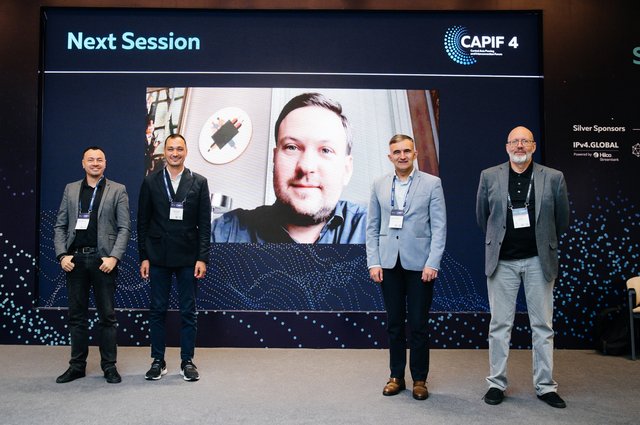
The IXP panel put resilience back on the ground. MSK-IX’s dual-core design sailed through a Moscow blackout - proof that smart topology pays. KAZ-Gov IX showed ~80% of peering sits in Almaty, underscoring the need to spread load and risk, while Piter-IX and KazNIX echoed that neutral, open IXPs are the region’s best insurance.
The attendees further dived into the routing security topic and, once again, IPv6 implementation in the region. The presentations on the state of RPKI deployment in the region, IPv6 deployment in Uzbekistan and Iran provided technical insights on these vital technologies.
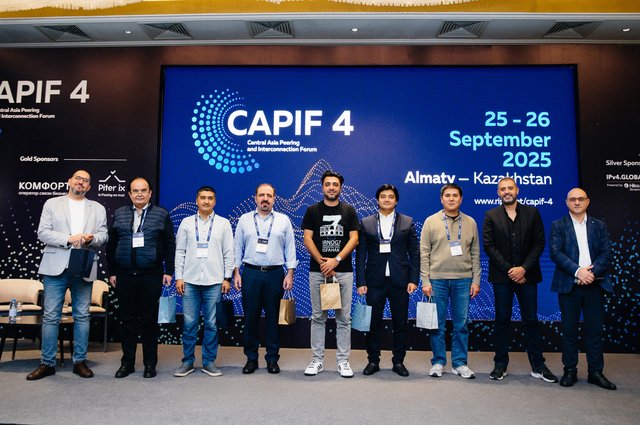
A talk about the RIPE community gave the CAPIF crowd an opportunity to learn about engaging with RIPE and the RIPE NCC, while rapid-fire lightning talks on RIPE stat and IPv6 deployment in Uzbekistan sparked a lot of interest and kept the attendees drawn to the stage till the very end.
Final thoughts...
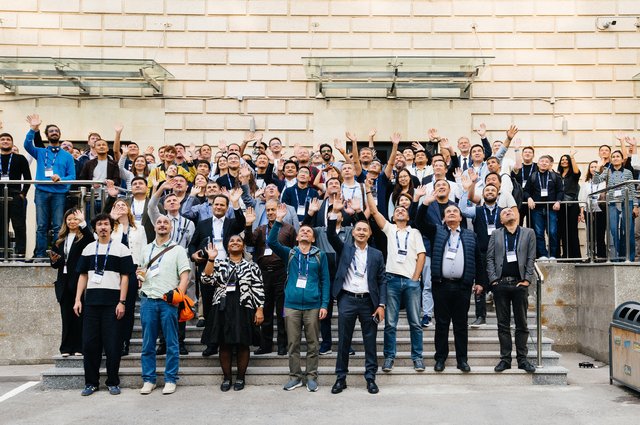
So what sticks? IPv6 is no longer a strategy; it’s the plumbing. Measuring the Internet in the region should continue to be a habit, not a hobby. Openness - from fibre visibility to IXPs - equals resilience. And space is now a serious adjacency to our networks, complete with new governance puzzles.
CAPIF returned to Almaty not just bigger, but clearer about where Central Asia’s Internet needs to go next: more paths, more peers, more transparency. Overall, another great success - and we hope to see a striving Central Asia Internet community next year.
Watch the official aftermovie below.

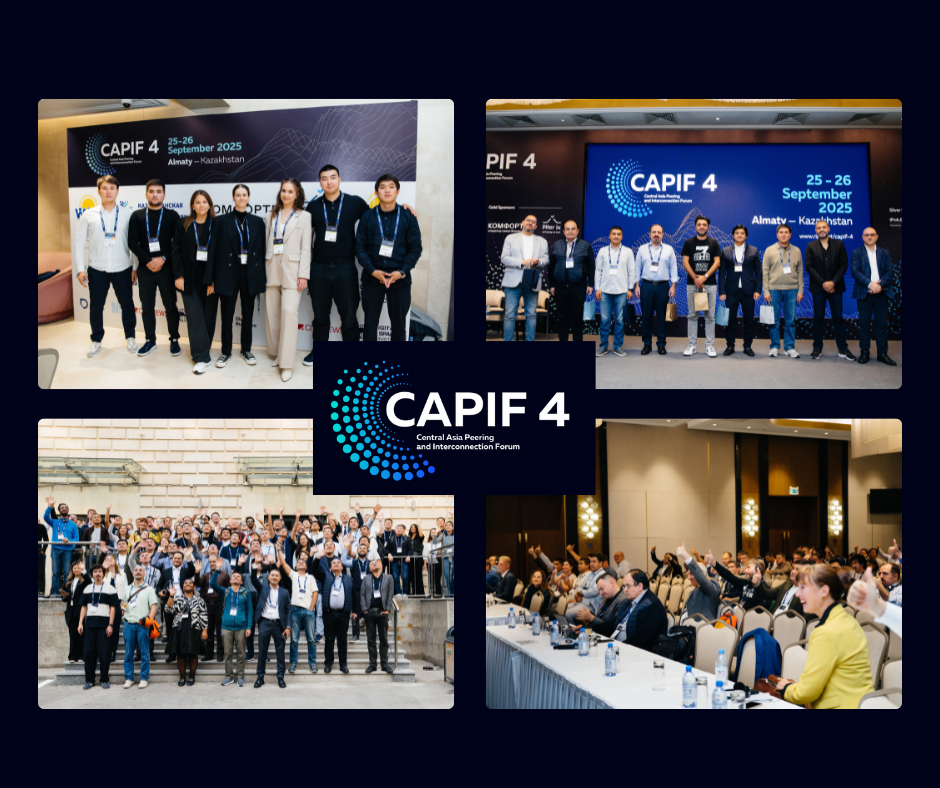


Comments 0